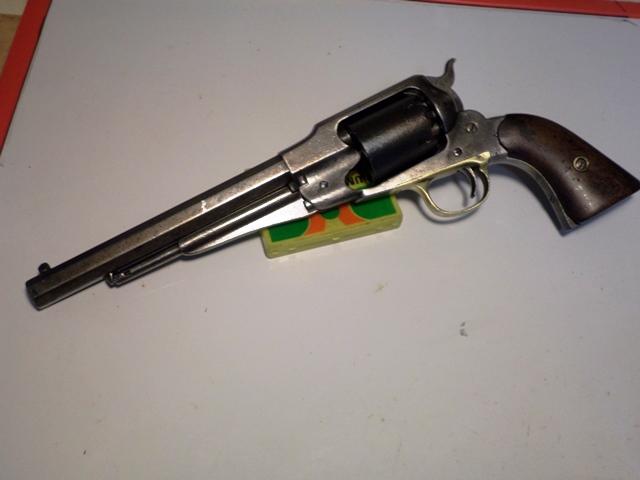

Like all percussion revolvers, loading is somewhat laborious–but fun. The Remington features milled slots in between the chambers so the gun may be carried fully loaded and the cylinder can be quickly taken out for cleaning by simply dropping the loading lever, half-cocking the hammer, and retracting the cylinder pin. I have carried around spare cylinders in the past for quick reloads, but the practice wasn’t documented at the time. Like most Civil War handguns, the New Model Army uses a six-shot cylinder and is single action, requiring the hammer to be cocked for each shot. This dual purpose loading lever had an 1858 patent date, hence the modern designation of this pistol. The barrel is eight inches long and octagonal and the loading lever doubles as a retainer for the cylinder axis pin. The gun is blued steel with the only embellishment being a brass trigger guard. Pietta’s Army pistol is quite close to the original except the wooden grips are a bit large and the necessary branding and proof marks are in plain view on the barrel. But overall the gun still has the futuristic aesthetics and handling that drew me to the Remington design in the first place when I first started shooting percussion revolvers. The “1858 Remington” is a modern collector’s term for the Remington New Model Army. The Old Model started production in 1861 with the slightly improved New Model Army coming out in 1863. Uberti and Pietta are producing fine Remington style handguns, both authentic and unauthentic. It was a revolver so good that it nearly bankrupted the company.

That lead to a number of revolvers being sent to the front lines– the most popular of which was the Remington New Model Army.

The loss of arms meant that the US Army needed more handguns than what Colt could produce. Whoever had the most men and the most arms was going to win. But the Civil War was unlike other previous conflicts.


 0 kommentar(er)
0 kommentar(er)
